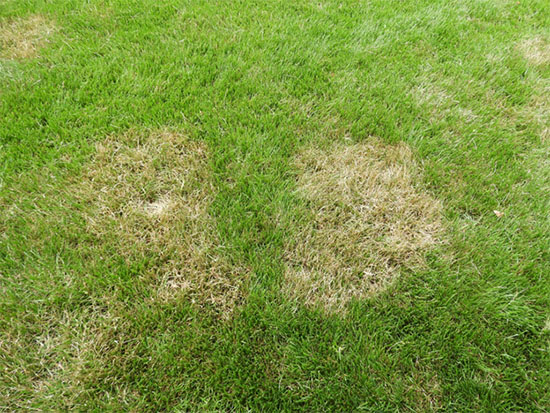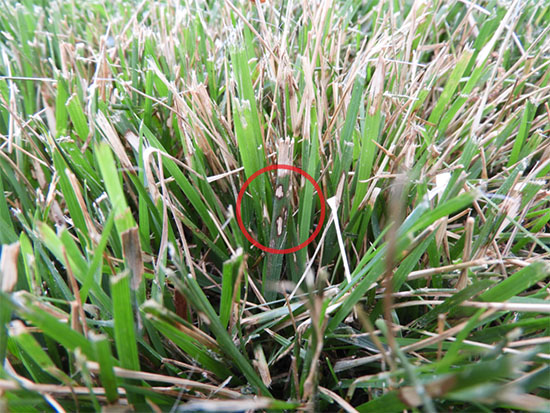Issue 8, June 18, 2018
Brown Patch
Weather conditions in many parts of Illinois have been conducive to the development of brown patch on turf. This is a fungal disease caused by Rhizoctonia solani. Brown patch outbreaks occur during hot, muggy weather when night temperatures are above 68°F, overnight dew periods exceed 8 hours, and daytime temperatures are in the 80s and 90s. The disease is capable infecting all cool-season turfgrass species. Tall fescue and perennial ryegrass are the more severely damaged landscape turgrasses. The disease tends to be most damaging on dense, highly fertilized turfgrasses.
Brown patch symptoms appear as patches ranging from a few inches up to 2 or 3 feet across. These patches appear dull tan to light brown (Photo 1). When the attack is severe, the crowns, rhizomes, stolons, and roots may turn brown and rot, causing turf to be thinned or killed in large areas. Distinctive, small, elongated to irregular shaped lesions occur on individual grass blades. The lesions have tan centers with dark, jagged margins (Photo 2). The pathogen spreads radially via fungal mycelium (Photo 3). You can observe this mycelium if you scout early in the morning, before the morning dew dries.

Photo 1: Brown Patch (Rhizoctonia solani) on Tall fescue

Photo 2. Brown patch lesion on tall fescue

Photo 3. Brown patch on tall fescue. Fungal mycelium advancing into nearby turfgrass.
Most turf will generally recover in 2 or 3 weeks following a light infection. For a severe infection in a home lawn, rake and remove the dead areas, and re-seed with a blend of resistant turf grasses suitable for the light requirements of the lawn. Avoid high nitrogen fertility during periods conducive to disease development. Schedule irrigation for early morning hours to help avoid extended periods of leaf wetness. Numerous fungicides are registered for brown patch control. Azoxystrobin (Heritage), fluoxastrobin (Disarm), flutolanil (Prostar), pyraclostrobin (Insignia) or triflozystrobin (Compass) are some options. Fungicide use is usually limited to high-value turfgrasses such as those found on golf courses. Several appropriately timed applications will be required throughout the summer. Effective fungicides are not always available in quantities suitable for homeowner use. Homeowners should contact a professional lawn care service for the application. (Travis Cleveland)
Author:
Travis Cleveland